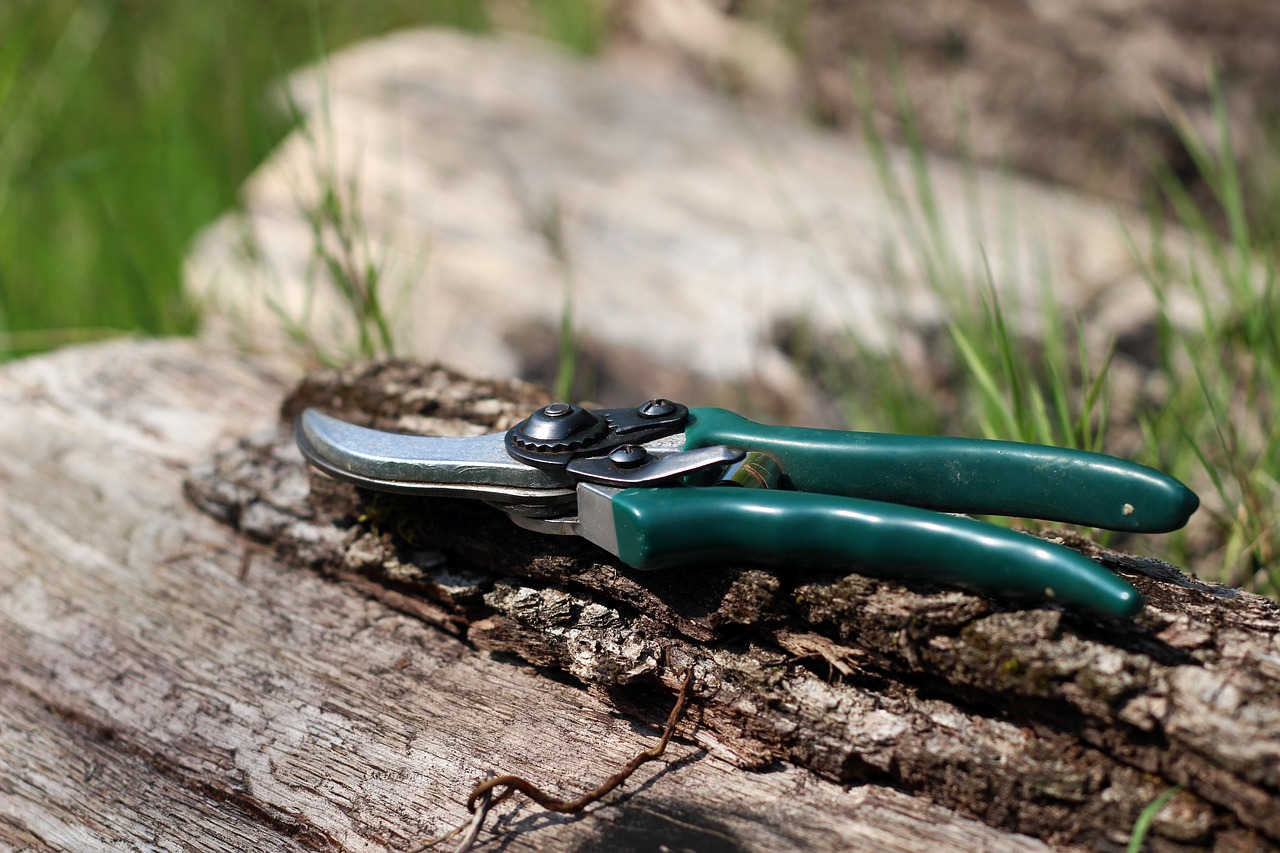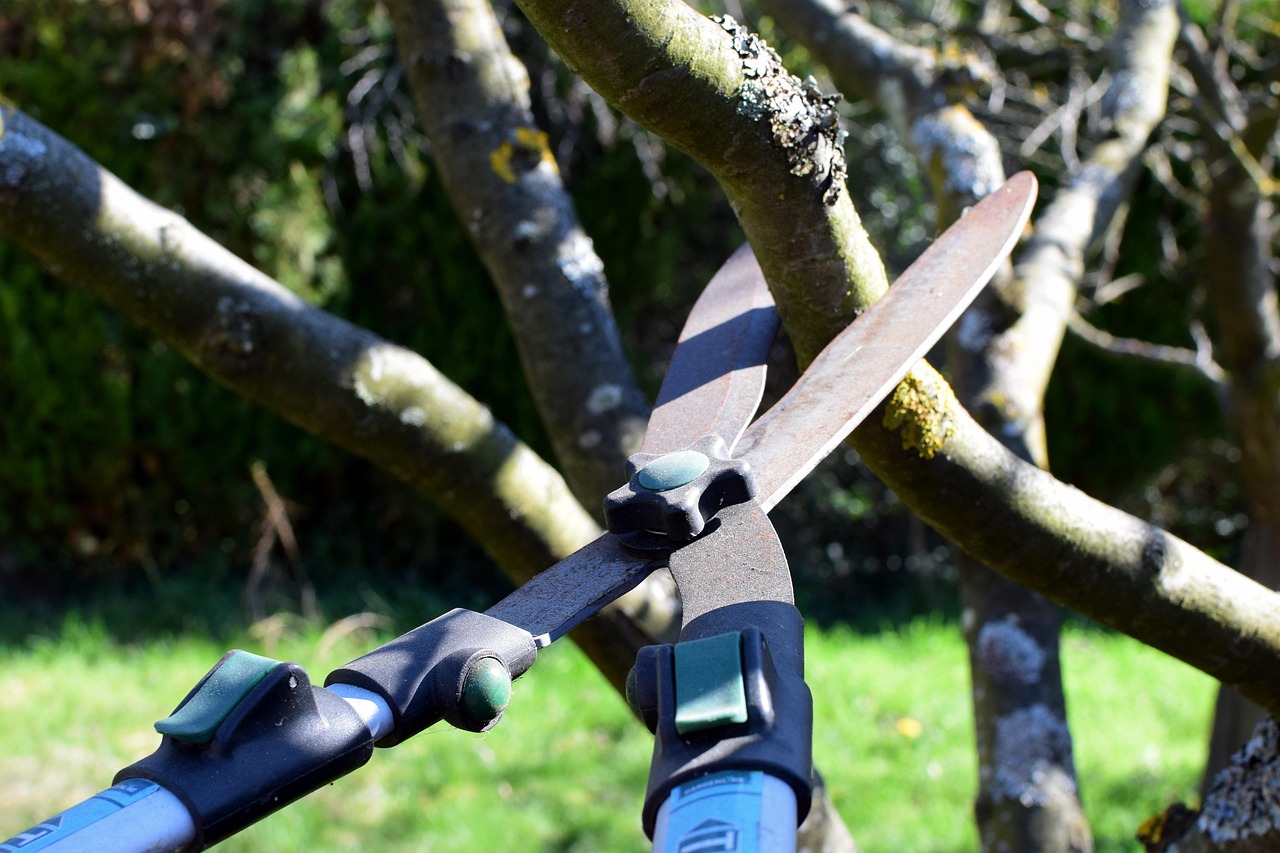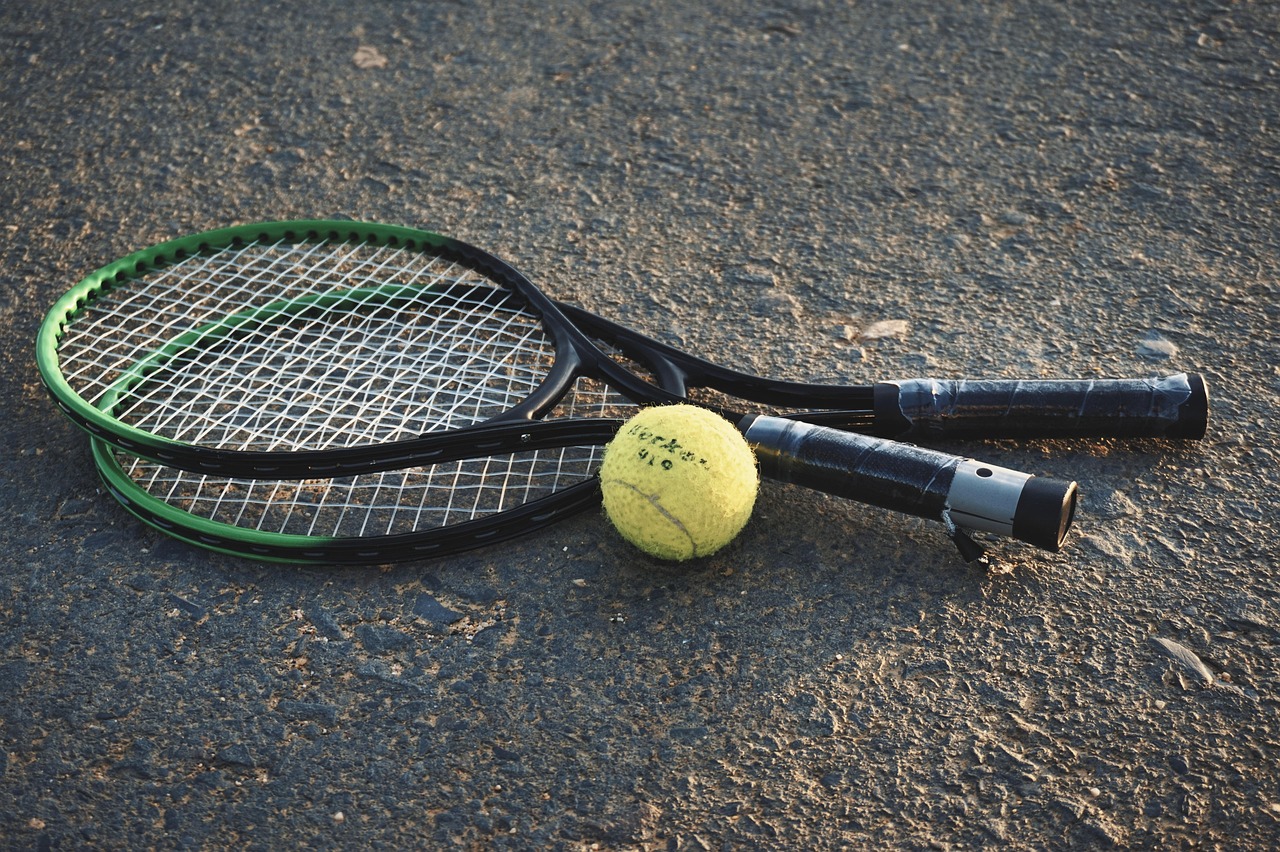Safe pruning practices for novice gardeners involve understanding the right tools, timing, and techniques. Proper preparation helps prevent damage to plants and ensures healthier growth. Always prioritize safety by wearing protective gear and following guidelines for each specific plant type.
Pruning is an essential skill for any gardener. It helps promote healthy growth, improves the appearance of plants, and can even enhance flowering and fruit production. However, for novice gardeners, the prospect of pruning can be intimidating. With the right knowledge and practices, anyone can learn to prune safely and effectively.

Before diving into the techniques, it is important to understand why pruning is necessary. Pruning removes dead or diseased branches, encourages new growth, and shapes plants for aesthetic appeal. Each type of plant has its own unique requirements, so knowing what to prune, when to prune, and how to do it safely is crucial.
Understanding Pruning Basics
To successfully prune your plants, familiarize yourself with some fundamental concepts. Here are key points to consider:
- Timing: Different plants have specific pruning times. Most flowering shrubs benefit from pruning right after they bloom.
- Tools: The right tools make all the difference. Essential tools include hand pruners, loppers, and saws.
- Techniques: Knowing how to make proper cuts is vital for plant health.
- Safety: Always prioritize your safety while pruning.
Each of these points plays a crucial role in ensuring effective and safe pruning practices.

Choosing the Right Tools
Using the correct tools is essential for effective pruning. Here are some common tools along with their uses:
| Tool | Description | Best Use |
|---|---|---|
| Hand Pruners | Small scissors-like tools for cutting branches up to ¾ inch thick. | Ideal for small plants and delicate branches. |
| Loppers | Larger scissors with long handles for cutting branches up to 2 inches thick. | Useful for thicker branches and taller plants. |
| Saw | A tool with a serrated edge for cutting larger branches. | Best for heavy-duty pruning on thicker limbs. |
| Hedge Shears | A tool designed for shaping hedges and shrubs. | Perfect for maintaining formal hedges and shrubs. |
Make sure to keep your tools clean and sharp. This not only makes cutting easier but also helps prevent disease transmission between plants. Always disinfect tools between uses when pruning different plants.
Learning Pruning Techniques
Mastering pruning techniques takes practice. Here are some basic techniques that novices should learn:

- Heading Cuts: These cuts encourage bushier growth by removing the tip of a branch.
- Thinning Cuts: Removing entire branches helps open up a plant’s interior, allowing light to reach more leaves.
- Rejuvenation Pruning: This technique involves cutting back old, overgrown plants to encourage new growth.
- Cleansing Cuts: Remove dead or diseased wood to improve plant health.
As you become more comfortable with these techniques, you can tailor them to suit specific plant types and desired outcomes.
Safety Considerations While Pruning
Your safety should be a top priority when pruning. Here are some safety tips to keep in mind:
- Wear Protective Gear: Use gloves, safety glasses, and sturdy shoes to protect yourself while working.
- Be Aware of Your Surroundings: Look out for overhead power lines or nearby structures that could pose risks during pruning.
- Use Proper Lifting Techniques: If you need to reach high places, use a sturdy ladder instead of standing on unstable surfaces.
- Take Breaks: If you’re working for an extended period, take breaks to avoid fatigue and maintain focus.
By following these safety guidelines, you can minimize risks and enjoy your gardening experience while ensuring the health of your plants.

The Importance of Researching Plant-Specific Needs
Each plant species has unique characteristics that influence how it should be pruned. Before you start pruning, take the time to research the specific needs of your plants. Some might require only minimal pruning, while others may benefit from more aggressive shaping. Understanding these needs will lead to healthier plants and greater success in your gardening endeavors.
As you embark on your pruning journey, remember that practice makes perfect. Start with smaller plants or less critical areas before progressing to larger or more prominent specimens. With patience and attention to detail, you will develop your skills over time.
Identifying When to Prune
Knowing when to prune is just as important as knowing how to prune. Timing plays a significant role in the health and growth of plants. Pruning at the wrong time can lead to stress, increased susceptibility to pests, and reduced flowering or fruiting. Here are some guidelines to help you identify the best times for pruning various types of plants.
Seasonal Considerations
Different plants have different seasonal needs for pruning. Here’s a breakdown of when to prune based on the season:
- Spring: Early spring is often the best time for pruning many flowering shrubs and trees that bloom later in the season. This includes plants like lilacs and roses. Pruning before new growth starts encourages healthy blooms.
- Summer: Summer pruning is ideal for maintaining shape and controlling size. It is also a good time to remove dead or diseased wood. Avoid heavy pruning during this time, as it can shock the plant.
- Fall: Fall is generally not recommended for pruning because it can stimulate new growth that will be damaged by winter frost. However, removing dead or diseased branches can be done.
- Winter: Late winter or early spring before new growth begins is an excellent time for deciduous trees and shrubs. This allows you to see the structure of the plant better without leaves obstructing your view.
Signs That Pruning Is Needed
Recognizing signs that indicate a plant needs pruning can help maintain its health and appearance. Look for the following signs:
- Dead or Dying Branches: These should be removed to prevent disease spread and encourage new growth.
- Overgrown Plants: If a plant is encroaching on pathways or other plants, it may be time for a trim.
- Pest Infestation: Pruning away affected areas can help manage pest problems.
- Improper Shape: If a plant is not growing in a pleasing shape, pruning can help restore its form.
Pruning Techniques for Specific Plant Types
Different plants require unique pruning techniques. Understanding the specific needs of various types of plants will ensure successful outcomes. Below are some common types of plants and their corresponding pruning techniques.
Trees
When pruning trees, focus on the following techniques:
- Crown Thinning: This technique involves removing selected branches throughout the tree’s crown to improve light penetration and air circulation.
- Crown Raising: Remove lower branches to elevate the crown for clearance. This is essential for safety and aesthetics.
- Crown Reduction: This reduces the overall size of the tree by cutting back branches to lateral buds. It should be done for overgrown trees.
Shrubs
Shrubs can be pruned using various methods depending on their growth patterns:
- Renewal Pruning: This involves cutting back older stems at ground level to encourage new growth from the base.
- Pinching: A method used primarily for herbaceous plants and flowering annuals, where you pinch back the tips of new growth to promote bushiness.
- Shearing: This technique shapes shrubs into formal hedges or rounded forms by cutting back evenly.
Perennials
For perennial plants, consider these approaches:
- Deadheading: Remove spent flowers to encourage more blooms and prevent seed production.
- Cutting Back: After flowering, cut back foliage to promote healthy growth for the next season.
- Dividing: Some perennials benefit from division every few years to manage overcrowding and rejuvenate growth.
Common Mistakes to Avoid When Pruning
Avoiding common pruning mistakes is essential for novice gardeners. Here are pitfalls to watch out for:
- Pruning at the Wrong Time: Be mindful of seasonal needs as outlined previously. Pruning at the wrong time can harm your plants.
- Using Dull Tools: Dull tools can crush stems rather than make clean cuts. Always ensure your tools are sharp.
- Over-Pruning: Removing too much foliage can stress a plant and hinder its growth. Always prune with moderation.
- Ineffective Cuts: Making cuts that are too close to the trunk or leaving too much stem can both lead to damage. Know the right cutting points.
Avoiding these mistakes will help you maintain healthier plants and enhance your gardening skills over time.
Learning from Resources
As you continue your pruning journey, leverage various resources available to deepen your understanding. Consider looking into:
- Gardening Books: Many books focus on specific plants and pruning techniques.
- YouTube Tutorials: Visual guides can help clarify techniques and methods.
- Local Extension Services: Many communities offer gardening workshops and classes focused on safe pruning practices.
- Online Forums and Communities: Engaging with other gardeners can provide valuable tips and experiences.
The more information you gather, the more confident you will become in your pruning skills. Embrace the learning process as you cultivate your garden.
Understanding Plant Health After Pruning
After pruning, it is essential to monitor and care for your plants to ensure they recover effectively. Pruning can be a shock to plants, but with proper aftercare, you can promote healing and encourage robust growth. This section covers how to recognize signs of stress, the importance of watering, and additional care tips.
Recognizing Signs of Stress
Pruning can cause stress to plants, especially if done incorrectly or at the wrong time. It is vital to observe your plants after pruning for signs of stress, which can include:
- Wilting Leaves: Leaves may droop if the plant is not receiving enough water or has lost too many branches.
- Yellowing Foliage: This can indicate shock or nutrient deficiency after pruning.
- Reduced Growth: Slower growth in the weeks following pruning may suggest the plant needs more time to adjust.
- Pest Infestation: Stressed plants may attract pests. Look for signs of insects or disease.
If you notice any of these signs, it may be necessary to reassess your pruning practices and provide additional care.
The Role of Watering
After pruning, proper watering is crucial for helping plants recover. Here are some guidelines to follow:
- Deep Watering: Ensure that the soil is thoroughly saturated. This encourages roots to grow deeper and helps support new growth.
- Avoid Overwatering: While it is essential to keep the soil moist, overwatering can lead to root rot. Monitor soil moisture levels closely.
- Mulching: Adding a layer of mulch can help retain soil moisture and regulate temperature. This will provide a stable environment for recovery.
- Adjust for Weather: Be mindful of rainfall and adjust your watering schedule accordingly. Plants may require less water during rainy periods.
Fertilizing After Pruning
Fertilization can significantly impact plant recovery post-pruning. Applying the right nutrients helps rejuvenate plants and promotes healthy growth. Here are some tips for fertilizing after pruning:
Choosing the Right Fertilizer
Selecting an appropriate fertilizer is essential for supporting your plants after pruning. Consider the following types:
- Balanced Fertilizers: These provide equal amounts of nitrogen, phosphorus, and potassium, supporting overall plant health.
- Slow-Release Fertilizers: These release nutrients gradually over time, reducing the risk of over-fertilization.
- Organic Fertilizers: Compost and well-rotted manure can improve soil health and provide nutrients without the risk of chemical burns.
Timing Your Fertilization
The timing of fertilizer application is just as important as the type you choose. Here are some guidelines:
- Immediately After Pruning: Avoid fertilizing immediately after pruning, as the plant needs time to recover from the shock.
- Wait a Few Weeks: Allow about three weeks after pruning before applying fertilizer. This gives the plant time to adjust and begin new growth.
- Follow Up in Growing Season: Apply fertilizer during the growing season as needed to support continued growth.
Monitoring for Pests and Diseases
Pruning can expose plants to pests and diseases. Vigilance is essential to catch any issues early. Utilize the following practices to keep your garden healthy:
Regular Inspections
Frequent checks on your plants will help you identify problems before they escalate. Look for:
- Pest Activity: Check for signs of insects, such as holes in leaves or sticky substances on stems.
- Disease Symptoms: Watch for discolored leaves, mold, or unusual growths that can indicate disease.
- Weed Growth: Weeds can compete for nutrients and water, so remove them promptly to maintain plant health.
Treatment Options
If you discover pests or diseases, consider these treatment methods:
- Pesticides: Use organic or chemical pesticides as necessary, but always follow instructions carefully to avoid harming beneficial insects.
- Disease Management: Remove affected leaves or branches to prevent spreading and ensure proper sanitation practices in your garden.
- Naturally Deterring Pests: Introduce beneficial insects such as ladybugs, which eat aphids and other harmful pests.
Seasonal Maintenance After Pruning
Your responsibilities do not end after pruning; regular seasonal maintenance is vital for long-term plant health. Here are some seasonal activities to incorporate into your gardening routine:
- Spring: Fertilize and monitor for pests as new growth emerges.
- Summer: Regularly check moisture levels and continue pest management; consider additional light pruning if necessary.
- Fall: Prepare your garden for winter by cleaning up debris and applying mulch to protect roots.
- Winter: Assess plants while dormant; plan for spring pruning based on growth patterns observed during the warmer months.
By maintaining a proactive approach to care after pruning, you can ensure that your plants thrive and flourish throughout the growing season.
Advanced Pruning Techniques for Novice Gardeners
Once novice gardeners have mastered the basics of pruning, they may wish to explore more advanced techniques. These methods can enhance the health and aesthetics of plants while allowing gardeners to express their creativity. Understanding these techniques can help you become a more proficient gardener.
Espalier Pruning
Espalier is a technique that involves training trees or shrubs to grow flat against a support structure, such as a wall or fence. This method not only saves space but also creates visually appealing patterns. Here are the steps to begin espalier pruning:
- Select the Right Plant: Choose species that respond well to training, such as apple or pear trees.
- Establish a Framework: Install horizontal wires or a trellis at various heights to guide growth.
- Start Training Early: Begin training young plants by pruning them to encourage lateral growth.
- Regular Maintenance: Prune regularly to maintain shape and remove any unwanted shoots.
Coppicing
Coppicing is a traditional method of pruning that involves cutting back trees or shrubs to ground level to promote new growth. This technique is effective for species like willow and hazel. It can improve the overall vigor of the plant and encourage bushier growth. Key points to consider include:
- Timing: Coppicing is best done in late winter or early spring before new growth starts.
- Frequency: Repeat the process every few years to maintain healthy growth.
- Variety Selection: Some plants respond better to coppicing than others, so research appropriate species.
Topiary
Topiary is the art of shaping plants into decorative forms, such as animals or geometric shapes. This technique can create striking focal points in your garden. Here are some tips for successful topiary:
- Choose the Right Plant: Evergreen plants with dense foliage, like boxwood and yew, are ideal for topiary.
- Use Templates: Utilize wire frames or templates to guide your shaping as you prune.
- Regular Trimming: Maintain the shape by trimming throughout the growing season.
Environmental Considerations in Pruning
As gardeners become more aware of environmental issues, it is essential to consider how pruning practices can impact the ecosystem. Here are some important factors to consider:
Wildlife Habitat Preservation
Many plants provide habitats for various wildlife species. Pruning should be done with the welfare of local fauna in mind. Here are some tips:
- Avoid Nesting Season: Refrain from pruning trees and shrubs during spring when birds may be nesting.
- Create Wildlife Corridors: Preserve certain branches or areas of dense foliage to support animal movement through your garden.
Sustainable Practices
Implementing sustainable gardening practices can enhance the health of your garden environment. Consider the following:
- Composting Prunings: Use pruned materials in your compost pile to recycle nutrients back into the soil.
- Avoid Chemical Treatments: Minimize the use of chemical pesticides or herbicides that can harm beneficial insects and soil health.
Final Thoughts
Safe pruning practices are crucial for novice gardeners looking to enhance their gardening skills. By understanding the basics of timing, techniques, and aftercare, you can foster healthy plant growth and improve the aesthetics of your garden. As you gain experience, exploring advanced techniques like espalier, coppicing, and topiary can further enrich your gardening journey.
The art and science of pruning require patience, practice, and a willingness to learn. Each plant you prune teaches you valuable lessons about its unique needs and responses. With consistent effort and ongoing education, novice gardeners can develop confidence in their abilities, creating beautiful and thriving gardens.
Remember that gardening is not just about plant care; it is also about nurturing your passion for nature and enjoying the process. Embrace every opportunity to learn and grow as you cultivate your gardening expertise.
